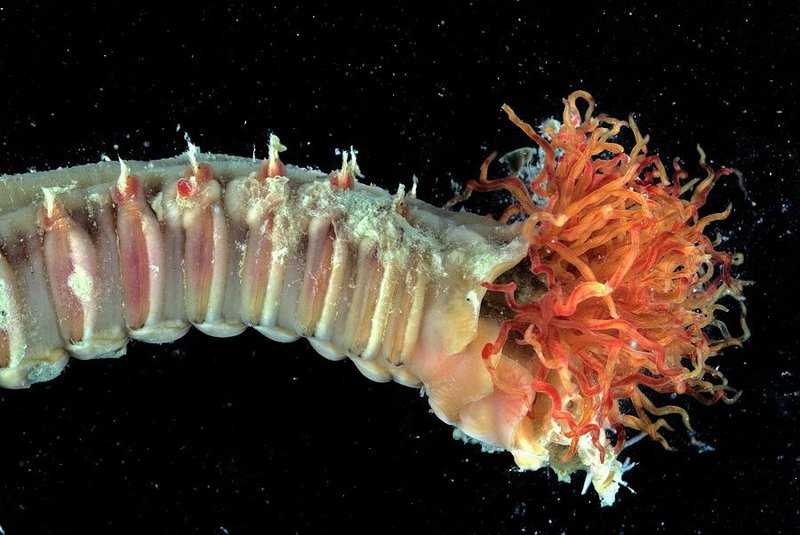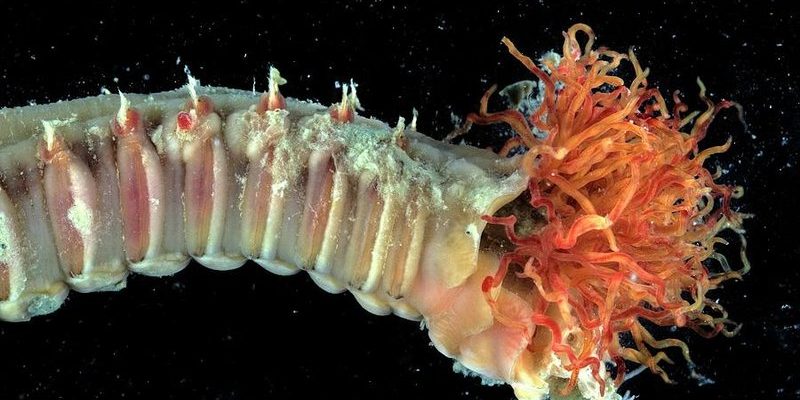
Just like how a squirrel might prefer a leafy tree to build its nest, marine polychaetes have specific habitat preferences that influence where they live. They’re not just any ordinary worms; they come in various shapes and sizes, each adapted to its unique surroundings. Let’s dive deeper into the underwater world of polychaetes and explore what makes their habitats special.
Understanding Marine Polychaetes
Marine polychaetes are a class of annelid worms, and the term “polychaete” means “many bristles” in Greek. Those bristles, or *chaetae*, help them move through their environments. These creatures live primarily in marine settings, ranging from sandy beaches to the depths of the ocean. Polychaetes come in over 10,000 species, each adapted to different habitats.
Imagine them as the ultimate survivors—some burrow deep into the sand, while others float freely. Their diverse structures and behaviors make them a vital part of the ocean’s food web, serving as prey for various fish and other marine animals. Knowing their habitat preferences helps scientists understand the health of marine ecosystems and the animals that depend on them.
Types of Marine Habitats
Marine polychaetes thrive in a variety of habitats. Here are some of the most common locations where you can find these fascinating creatures:
- Subtidal Zones: These areas are submerged even at low tide and provide a stable environment with plenty of resources.
- Intertidal Zones: The spaces that are exposed and submerged by tides, where polychaetes are often found burrowing in the sand or mud.
- Deep-Sea Environments: Some species live in dark, cold waters thousands of feet down, relying on organic material that sinks from above.
- Coral Reefs: A vibrant habitat that supports a wealth of life, including many polychaetes that find shelter and food among the corals.
Each of these habitats presents unique conditions—water depth, temperature, and salinity—all of which influence the types of polychaetes that can survive there. So, how do they decide where to live? Let’s look at their preferences in more detail.
Subtidal Preferences: Stability and Resources
In the subtidal zones, marine polychaetes enjoy stable conditions and abundant food. This environment is often rich in nutrients, allowing them to thrive. Here’s what makes this habitat appealing:
1. Stable Water Conditions: Since this area is submerged most of the time, polychaetes don’t have to deal with the harsh conditions of tidal changes.
2. Rich Organic Matter: Many polychaetes feed on detritus—decaying organic material that provides essential nutrients. The abundance of food sources in this habitat supports larger populations.
3. Less Competition: The subtidal zones often have fewer organisms competing for the same resources compared to shallower waters.
This stability means polychaetes can focus on growth, reproduction, and survival without life-or-death struggles against the elements. It’s like having the perfect workspace with everything you need right at your fingertips.
Intertidal Preferences: Adaptability and Resilience
In the intertidal zone, polychaetes face a unique set of challenges. They adapt remarkably well to this dynamic habitat, where they experience exposure to air and changing water levels:
1. Burrowing Behavior: Many polychaetes dig into the sand or mud, creating tubes that protect them from drying out during low tide. It’s like having a cozy home that shields them from the elements.
2. Diverse Diet: Since this area is often rich in nutrients washed in by tides, polychaetes can enjoy a varied diet, including algae and small organisms.
3. Rapid Reproduction: The intertidal zone’s dynamic nature encourages rapid reproduction, allowing polychaete populations to bounce back quickly after disturbances.
Despite the challenges, polychaetes in the intertidal zone exemplify resilience. They adapt their life strategies to thrive in a constantly changing environment, showcasing the beauty of life’s adaptability.
Deep-Sea Preferences: The Dark and Mysterious Abyss
Marine polychaetes also inhabit the deep-sea, an environment marked by extreme conditions. Here’s how polychaetes manage in this dark, cold world:
1. Biological Adaptations: Polychaetes have evolved unique features, like large bodies and specialized feeding structures, to capture and consume organic material that drifts downward from shallower waters.
2. Energy Conservation: In the deep sea, where food can be scarce, polychaetes have low metabolic rates, allowing them to survive longer on limited resources.
3. Habitats Created by Others: Some deep-sea polychaetes even build habitats, like tube structures, that provide shelter and protection against predators.
The deep sea may seem inhospitable, but it’s home to many unique polychaete species that have adapted to thrive in this mysterious domain, proving that life can flourish even in the most extreme conditions.
The Importance of Coral Reefs for Polychaetes
Coral reefs are often viewed as the “rainforests of the sea,” and marine polychaetes play a crucial role in these vibrant ecosystems. Here’s why coral habitats are essential for them:
1. Biodiversity Hotspots: Coral reefs host a wide variety of marine life. Polychaetes find not just food but shelter and protection in the nooks and crannies among the corals.
2. Nutrient Cycling: Polychaetes contribute to the health of coral reefs by breaking down organic matter, which helps recycle nutrients back into the ecosystem.
3. Thrive in Symbiosis: Some polychaete species form symbiotic relationships with corals by living within their structures, benefiting from mutual protection and nourishment.
The symbiotic relationships fostered between polychaetes and corals highlight the interconnectedness of marine life, showcasing the role each species plays in the health of the ocean.
Threats to Marine Polychaete Habitats
Sadly, marine polychaetes face threats from human activities that disrupt their habitats. Here are some challenges they encounter:
1. Pollution: Chemicals and waste introduced into the ocean can alter the delicate balance of marine ecosystems, affecting the health of polychaetes and their habitats.
2. Climate Change: Rising ocean temperatures and changing salinity levels can impact food availability and habitat conditions for polychaetes.
3. Destruction of Habitats: Activities like bottom trawling and coastal development destroy critical habitats where polychaetes thrive.
Understanding these threats highlights the need for conservation efforts to protect marine polychaetes and their habitats. By safeguarding these environments, we can ensure the overall health of marine ecosystems.
So, there you have it! Marine polychaetes are more than just wriggly worms—they’re an integral part of our oceans. Their habitat preferences, whether in subtidal zones, intertidal areas, the deep sea, or coral reefs, showcase their incredible adaptability and resilience. As we learn more about these fascinating creatures, it becomes clear that their well-being is closely linked to the health of our oceans.
By protecting their habitats, we’re not just saving polychaetes; we’re ensuring the stability of entire marine ecosystems. As stewards of the ocean, let’s work together to respect and preserve these vibrant underwater worlds for generations to come.

